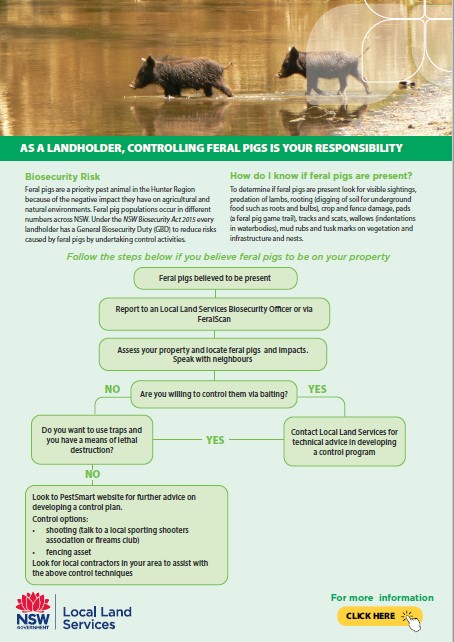
Feral pigs
Feral pigs are a wrecking ball of environmental, livestock and fencing damage.
 They create significant soil disturbance, causing erosion, damaging your soil structure, waterways and dams. Their handiwork also greatly assists the spread of weeds.
They create significant soil disturbance, causing erosion, damaging your soil structure, waterways and dams. Their handiwork also greatly assists the spread of weeds.
Feral pigs can also prey on livestock and damage your farm infrastructure. They can carry disease and parasites that affect stock and pose a disease risk to humans (eg brucellosis).
They are a major potential host of a number of exotic diseases such as foot-and-mouth disease.
So for these reasons, we strongly suggest you monitor for feral pig activity and better understand wild pig issues in your area.
To better understand your feral pig control options, download the decision tool. PDF, 131.33 KB
Biosecurity Risk
Under the NSW Biosecurity Act 2015 every landholder has a General Biosecurity Duty to reduce risks caused by feral pigs by undertaking control activities.
How do I know if feral pigs are present?
To determine if feral pigs are present, look for:
- visible sightings
- predation of lambs
- rooting (digging of soil for underground food such as roots and bulbs)
- crop and fence damage, pads (a feral pig game trail)
- tracks and scats
- wallows (indentations in waterbodies)
- mud rubs and tusk marks on vegetation and infrastructure
- nests.